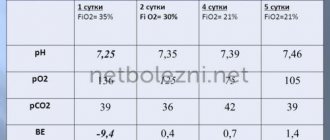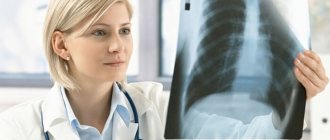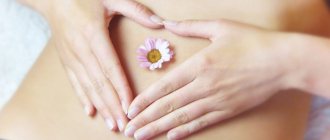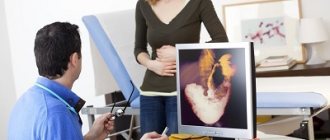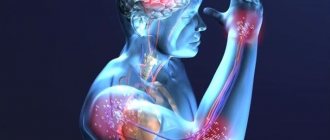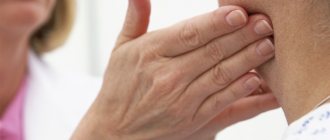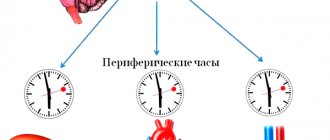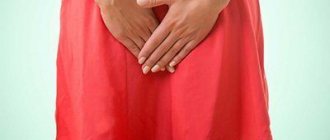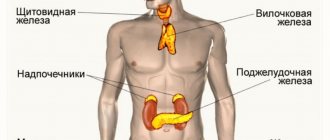Types and types of human breathing - general meanings
Human breathing consists of several types - external and internal (tissue).
External respiration is the exchange of gases between the external environment and the lungs, lungs and blood. Oxygen enters the lungs, then into the blood, after which the blood distributes oxygen throughout the body, nourishing the tissues. This is already the stage of tissue respiration.
Pulmonary ventilation (that is, external breathing) occurs due to the movements of the chest. When we inhale, we take in oxygen, and when we exhale, we release carbon dioxide. A person most often does not pay attention to his breathing, but this is a very complex physiological process.
When you inhale, the respiratory muscles contract, the chest cavity expands, the lungs stretch, the alveolar cavities (this is the part of the lungs that is responsible for breathing) expand and oxygen enters the lungs due to the pressure difference between the alveolar and atmospheric air. Then the contraction of the respiratory muscles stops, the lungs decrease (due to their elasticity), the air pressure in the alveoli becomes higher than atmospheric pressure and exhalation occurs.
Breathing also occurs through the skin and digestive tract. But this is only 1-2% of the total gas exchange.
How to assess lung function after COVID-19
There is a no-false breath test that anyone can do on their own. According to its terms, it is necessary:
- Take a deep breath through your nose.
- Hold your breath for ten seconds.
- Exhale slowly.
If during testing no discomfort arises, a cough does not start, or a strong sore throat does not appear, then everything is fine with the lungs. If your health worsens when you try to hold in air, a medical examination is indicated.
Difficulties in self-diagnosis
Shortness of breath, which occurs due to narrowing of the nasal passages and swelling of the mucous membranes during a runny nose, and which manifests itself due to deterioration of the lungs - these are two completely different problems. A person is not able to independently understand what causes his illness.
Therefore, if you have difficulty breathing, you should still seek help from a therapist or pulmonologist. Self-medication for such symptoms is unacceptable.
Breathing pattern
If you go to a general practitioner, he will definitely examine your respiratory system. He will look at how your chest moves and use a stethoscope to listen to how the air moves inside your lungs.
Breathing is produced by contraction of the diaphragmatic, intercostal and abdominal muscles. Depending on which muscles work the hardest, there are several types of breathing: chest, abdominal and mixed.
A person can live without oxygen for 5-7 minutes. After this time, he loses consciousness, irreversible changes occur in the brain and ultimately death occurs.
How to treat shortness of breath after coronavirus
When helping people who have difficulty taking deep breaths, doctors use:
- drug therapy;
- oxygenation;
- inhalation;
- physiotherapy;
- breathing exercises.
Let's look at each method in more detail.
Medicines for shortness of breath
To improve pulmonary function, doctors prescribe drugs belonging to such pharmacological groups as:
- antiviral;
- immunomodulators;
- bronchodilators;
- expectorants;
- thinning phlegm;
- antibiotics.
Drugs and their dosages are always selected individually, taking into account the severity of the symptoms of the disease and the patient’s health status.
Oxygenation
It is inhaled oxygen therapy. Used if a person is unable to breathe on their own. Then oxygen is introduced directly into the respiratory tract through a special catheter.
Oxygenation is required only for seriously ill patients. If a person controls his condition and follows all medical prescriptions, the risk of sudden suffocation will be minimal.
Inhalations
During inhalation, a nebulizer is used, breaking the medicinal solution into tiny particles that easily penetrate into the deep tissues of the lungs. A good effect can be achieved by:
- agents that thin viscous sputum;
- antiseptics;
- sea water;
- saline solution;
- bronchodilators;
- coughing
Inhalations should not be carried out unless prescribed by a doctor, since if the inhaled drug is selected incorrectly, lung function may deteriorate.
Physiotherapeutic procedures
To speed up the resorption of inflammatory foci and abnormal compactions, during and after coronavirus, you need to do the following:
- massage of the chest area;
- UHF therapy;
- electrophoresis with enzyme solutions;
- SMT.
It is important to follow the physiotherapy course to the very end. If you abandon the procedures immediately after you feel better, the negative symptoms will most likely return again.
Breathing exercises
You should do breathing exercises during illness and for at least one month after receiving a negative test for COVID-19. They activate the muscles of the chest and increase blood flow to the lung tissues.
If a patient suffers from severe shortness of breath, the doctor may recommend using a respirometer, a device that measures the intensity in cells and tissues.
Basic types of breathing
Most often, people don't pay attention to how they breathe. And experts distinguish 3 types of breathing:
- Chest
- mainly characteristic of women. Occurs due to contraction of the intercostal muscles. The chest cavity expands in the anterior, posterior and lateral directions. And the lower part of the lungs sometimes suffers from insufficient ventilation. - Abdominal
- this type of breathing is more often used by men. This is done using the diaphragm. Expansion of the chest cavity occurs primarily in an upright position, which may cause a lack of oxygen in the upper part of the lungs. - Mixed
- with this type of breathing, the lungs are completely filled with oxygen and expand evenly in all directions. It is carried out by contracting the intercostal muscles and the diaphragm.
The type of breathing also depends on age, climate and other factors influencing the internal and external environment.
Literature:
- COVID-19, coronavirus infection caused by SARS-CoV-2 / 2020 / ORGZDRAV: News. Opinions. Education. VSHOUZ Bulletin.
- COVID-19: respiratory infection caused by a new coronavirus: new data on epidemiology, clinical course, patient management.
- Medical rehabilitation for new coronavirus infection (Covid-19) / Ivanova G. E., Balandina I. N., Bakhtina I. S., Belkin A. A., Belyaev A. F., et al. / 2021 / Physical and rehabilitation medicine, medical rehabilitation
The text was checked by expert doctors: Head of the socio-psychological service of the Alkoklinik MC, psychologist Yu.P. Baranova, L.A. Serova, a psychiatrist-narcologist.
CAN'T FIND THE ANSWER?
Consult a specialist
Or call: +7 (495) 798-30-80
Call! We work around the clock!
Changes in breathing pattern
It happens that the type of breathing changes. This happens for a number of reasons.
For example, in women this may be associated with rib fractures or inflammation of the pleura.
The body tries to help itself and reduce pain if it is present when inhaling or exhaling. This uses additional muscles.
If a person is sick for a long time and coughs often, then his upper abdominal muscles become denser. With chronic problems, the muscles that are located in the area of the collarbones and chest become enlarged.
You can also change your breathing type consciously for preventive purposes. The most correct breathing is abdominal breathing. Look at how children breathe - you can hardly hear them and only the stomach moves a little. This is how nature intended it and you need to make sure that as an adult you continue to breathe correctly.
If it’s difficult to control this every second, then try doing breathing exercises. There are many different techniques, but the technique of the Russian scientist Buteyko is recognized as the most effective. He developed a system that helped him cope with his chronic illness, and then heal many people. Its essence is that you need to breathe calmly and superficially. This is contrary to many teachings that teach deep and frequent breaths. But it was this technique that helped a huge number of people.
You should breathe through your nose, calmly and relaxed. But there is no need to allow a lack of air. And deep breathing provokes hyperventilation of the lungs, which leads to many diseases (for example, asthma and hypertension). And proper breathing prevents frequent colds, improves skin condition and gets rid of excess weight.
Healthy breathing
You only need to breathe through your nose, since the nose is a filter that protects the body from viruses and germs and warms the air.
Also, breathing should be light and shallow. Of course, the body needs to receive enough oxygen. No less, but no more. Otherwise, hyperventilation of the lungs may occur, which leads to many diseases.
Take an example from children's breathing. Yes, it will be difficult to rebuild, but it will prolong your life and improve your health.
Widespread pathological breathing
Impaired breathing can occur due to a number of pathologies that lead to impaired ventilation and blood circulation. For example, diabetes, kidney failure and various injuries.
As a result, the person begins to feel weak and faint. Blood pressure fluctuates, there is not enough oxygen (or too much), and at night breathing may stop altogether.
Experts identify several pathological conditions:
- Stopping breathing occurs for a number of reasons. Traumatic brain injuries, respiratory paralysis, poisoning. Some people who suffer from snoring experience sagging of the upper airways, which leads to sleep apnea.
- Shortness of breath is a feeling that you are not getting enough air. Most often occurs after strenuous exercise. But if the heart function is disrupted, shortness of breath can also occur in a lying position. In such cases, the patient has to take a vertical position.
- The breathing of a hunted animal is frequent and shallow. Occurs during periods of nervous tension, carbon monoxide poisoning, anemia, fever and blood diseases. It can also be induced artificially if you have to hold your breath for a long time.
- Decreased breathing - this pathology is caused by increased intracranial pressure, uremia, coma, some infectious diseases and severe poisoning. In such cases, a person cannot fully breathe on his own and is connected to a special apparatus.
But the listed pathologies can not only occur individually, but also form pathological types of external respiration.
Spirography and spirometry
Table of contents
- Spirography (spirometry): what is this procedure?
- Indications for research
- Execution principle
- Advantages of spirography (spirometry) at MEDSI in Moscow
Diagnosis of external respiratory function
is a mandatory component of many general clinical examinations, which are carried out annually to monitor health status. For patients at risk, the intervals between diagnostic measures may be reduced.
In order to study external respiration, spirography is carried out today (including with a sample)
. The procedure is quick, safe and painless. The patient does not experience significant discomfort. In some cases, minor side effects occur: increased heart rate and tremors of the limbs, which go away on their own within a few minutes or hours.
Spirography (spirometry): what is this procedure?
The procedure allows us to identify pathologies not only of the respiratory system, but also of the cardiovascular system. Diagnosis is carried out using a special medical device. The device consists of a sensor that responds to air flow and computer systems. They determine all the characteristics important for the survey and convert them into digital format.
The spirometer records the volume of air from the lungs at maximum exhalation after maximum inhalation. When interpreting the examination results, the patient’s age is taken into account. This is due to the fact that the norm varies among people of different age categories.
Both spirography and breathing spirometry aim to measure lung function. During the first procedure, additional graphical recording of indicators is made. This is the slight difference between the methods.
Important! The quality and accuracy of diagnostic results depend on a number of factors, including:
- serviceability of equipment
- equipment settings feature
- the patient clearly follows the specialist’s instructions
- research methodology used
That is why it is very important to undergo the procedure in a modern clinic with experienced specialists. They will carry out all the manipulations and perform informative diagnostics.
It is very important to strictly follow all doctor’s recommendations! Only in this case will the assessment of lung function be carried out accurately and make it possible to make a diagnosis as soon as possible.
The tests examine the following indicators:
- Breathing rate.
This indicator represents the number of breathing movements that are performed within a minute. Normally, a person takes 16–17 breaths - Tidal volume.
This parameter determines the volume of air entering the lungs per breath - Minute breathing volume.
This indicator determines the volume of air entering the lungs within a minute. It varies from 4 to 10 liters
Also assessed:
- forced vital capacity
- forced expiratory volume per second
- maximum efficient ventilation
- air speed, etc.
Important! All indicators are assessed only as a whole. Only with a number of deviations from the norm can we speak of the presence of severe pathology. Any assessment is carried out exclusively by a doctor. We strongly do not recommend trying to diagnose yourself! You do not have all the knowledge and skills necessary for this.
Carrying out spirography today is relevant not only for therapists and pulmonologists, but also for cardiologists, allergists-immunologists and other doctors. Additionally, other examinations are performed. As a rule, only after a comprehensive diagnosis is it possible to identify even hidden pathologies of various organs and systems.
Indications for research
You should undergo spirometry to:
- diagnosis of bronchopulmonary diseases
- respiratory failure assessments
- work ability examination
- recording initial signs of respiratory disorders among workers in hazardous industries
- monitoring the treatment already carried out and the effectiveness of prescribed therapy or rehabilitation measures
- choosing the type of artificial ventilation or anesthesia before surgery
The main indications for the examination are:
- dyspnea
- feeling of incomplete inspiration and lack of oxygen
- prolonged (more than a month) cough
- acute allergic reactions
- many years of smoking experience
- neuromuscular diseases
- suspicion of bronchitis, tracheitis, bronchial asthma, etc.
- diseases of the cardiovascular system that occur with insufficient blood circulation
- chest injuries or abnormalities of its development
In addition, spirometry should be done as part of a comprehensive examination of athletes and other categories of patients.
Execution principle
Testing can be carried out in two positions: standing or sitting. During the procedure, a clamp is placed on the patient's nose, which prevents the passage of air. A special device is attached to a mouthpiece placed in the oral cavity. Spirography is provided at maximum exhalation, at rest, with increased air circulation through the lungs.
In some cases, a study is carried out with the additional use of special drugs. It is relevant when specific diseases are suspected.
- Spirometry with bronchodilator.
This diagnosis allows us to identify bronchospasm. The procedure is also relevant when treatment has already been prescribed and monitoring its effectiveness. - Testing with methacholine.
This test spirometry is aimed at identifying asthma. The examination also reveals a tendency to bronchospasm.
Diagnosis is carried out in stages. At first, the patient is in a relaxed state, and at the request of the doctor, he performs some breathing manipulations.
- Tidal volume testing.
The patient performs normal relaxed inhalations and exhalations - Determination of expiratory reserve volume.
During natural inhalation, intense exhalation is performed - Measurement of inspiratory reserve volume.
Intensive inhalation follows natural exhalation - Determination of vital capacity of the lungs.
During this test, the patient exhales deeply and inhales calmly.
At the end of the main part of the examination, the mouthpiece is removed and the patient rests. In order to eliminate errors, diagnostics can be repeated several times.
Can also be performed:
- Measurement of forced vital capacity.
In this test, the patient inhales air, holds it in, and then, with some effort, quickly exhales. Important! The duration of exhalation should be at least 6 seconds - Determination of maximum ventilation.
To perform this test, you need to breathe as often and deeply as possible for a minute. Important! At this stage of diagnosis, some side effects may occur: darkening of the eyes and dizziness - Bronchodilation tests.
For such tests, medications that have a bronchodilator effect are additionally used. They are administered by inhalation. Testing takes approximately 15–30 minutes
Advantages of spirography (spirometry) at MEDSI in Moscow
- Modern equipment.
To perform the examination, expert-class installations are used. To increase the information content and accuracy of research, equipment is regularly maintained - Experienced doctors.
Specialists in the field of functional diagnostics have all the skills and knowledge that allow them to carry out accurate examinations. Our doctors regularly improve their qualifications and master the necessary spirometry techniques - No queues and the ability to make an appointment at a convenient time.
You can get tested during our clinic opening hours. It is enough to sign up for diagnostics in advance. We do not delay in deciphering the results - Possibility of complex diagnostics.
If necessary, the patient is additionally referred for laboratory tests and other examinations. This allows you to make an accurate diagnosis in a short time - Possibility of examining adults and children.
We accept patients of all ages and provide comfortable conditions for everyone - Possibility of treatment immediately after receiving the results.
We are ready to provide comprehensive therapy for pathologies. If necessary, hospitalization in a hospital is provided
If you are planning to do spirometry (spirography) in Moscow in our clinic, or want to find out the price of the examination, call +7 (495) 7-800-500. A specialist will answer all questions and make an appointment at a convenient time.
Mouth-to-mouth breathing
- The victim is placed on his back. And the person who provides first aid kneels on the side.
- Cover the victim's nose with one hand, and open the mouth with the other - take the chin, pull it down and forward a little.
- Place a disposable handkerchief or cloth napkin over the patient's mouth to keep germs out.
- Inhale more air, bend over and exhale it into the victim’s mouth.
Take at least 16 breaths. If you do everything correctly, the patient’s chest will rise and fall, and exhalation will occur on its own.
When performing mouth-to-mouth artificial respiration on a child, you should not take deep breaths.
Content:
- Symptoms of pathology
- Options for shortness of breath after Covid-19
- How to assess lung function after COVID-19 3.1. Difficulties in self-diagnosis
- How to treat shortness of breath after coronavirus 4.1. Medicines for shortness of breath 4.2. Oxygenation 4.3. Inhalations 4.4. Physiotherapeutic procedures 4.5. Breathing exercises
- Ways to improve lung function on your own
COVID-19 takes its toll throughout the body, but it most commonly affects the lungs. Shortness of breath after Covid is common. It occurs both in people who have had pneumonia and in those who have not encountered serious complications during their illness.
Scientists have found that in approximately 20% of those recovering, the function of the lung tissues has worsened. Patients gasp for air if they are in a hurry, are unable to lie on their back for a long time, and quickly get tired when doing even simple physical work. Things are especially bad for people diagnosed with pulmonary fibrosis, which leads to scarring of the paired organ.
Under normal conditions, fibrosis is rare. It is most often encountered by people over the age of sixty. With this diagnosis, shortness of breath is a concern. It can be so strong that it is difficult for a person to talk and move.
We suggest you figure out why difficulty breathing after coronavirus bothers you, and how to recognize and eliminate dangerous symptoms. It is important to know this information to prevent complications from Covid-19 from progressing.
“Mouth to nose”
This type of first aid is performed less frequently than mouth-to-mouth. It is used if it is not possible to open the victim’s mouth. If the facial nerve is pinched or the jaw is clenched too tightly.
“Mouth to nose” is performed in almost the same way as “mouth to mouth”, with the difference that air must be inhaled into the nose. In this case, it is necessary to hold the victim's chin.
It is difficult to provide first aid - sometimes you have to combine artificial respiration with cardiac massage or “breathe” for a person for about an hour. Therefore, it will be good if 2 people begin to provide assistance. At a minimum, because one will have to call an ambulance, and the other will begin to provide first aid.
It is important to learn proper breathing. You can do this at the Marie Deboshir “Air” marathon. It was developed based on Buteyko's techniques and complemented by Deboshir's experience. People who completed this marathon note that they began to feel much better when they began to perform proper breathing exercises.
And the “SmeloNET” marathon will reveal for you many secrets of beauty and long youth. Ideal posture and toned skin, good vision and a clear facial contour - you can get all this after completing the marathon. And don’t worry—you’ll definitely have enough time. You will only need from 5 to 30 minutes a day to perform the techniques. Allow yourself to be healthy and beautiful.
Ways to improve lung function on your own
What can a person suffering from shortness of breath after coronavirus do? There are simple ways to normalize pulmonary activity:
- Eating foods that increase lung capacity. Preference should be given to fruits and vegetables. Tomatoes, blueberries, nuts, onions, and citrus fruits are especially useful. Spices and fatty foods should be avoided.
- No smoking. Tobacco smoke and the toxins it contains make the lungs extremely vulnerable. In order for the tissue to recover and the inflammatory process to stop progressing, it is important to stop smoking.
- Do cardio workouts. You need to start them only if you are in good physical health. Cardio increases lung capacity, normalizes blood circulation, and increases heart rate. It is good if the exercises are performed in the fresh air. But the load should be increased gradually.
- Respiratory protection from environmental pollution. A person who has recently had Covid-19 should not be in polluted conditions. If his professional activity involves being in harmful conditions, it is better to take a long vacation.
Patients who strictly follow the doctor's instructions, take medications, perform breathing exercises and eat properly quickly stop suffering from shortness of breath. Take care of your health and don't let the coronavirus deprive you of your ability to breathe deeply.
